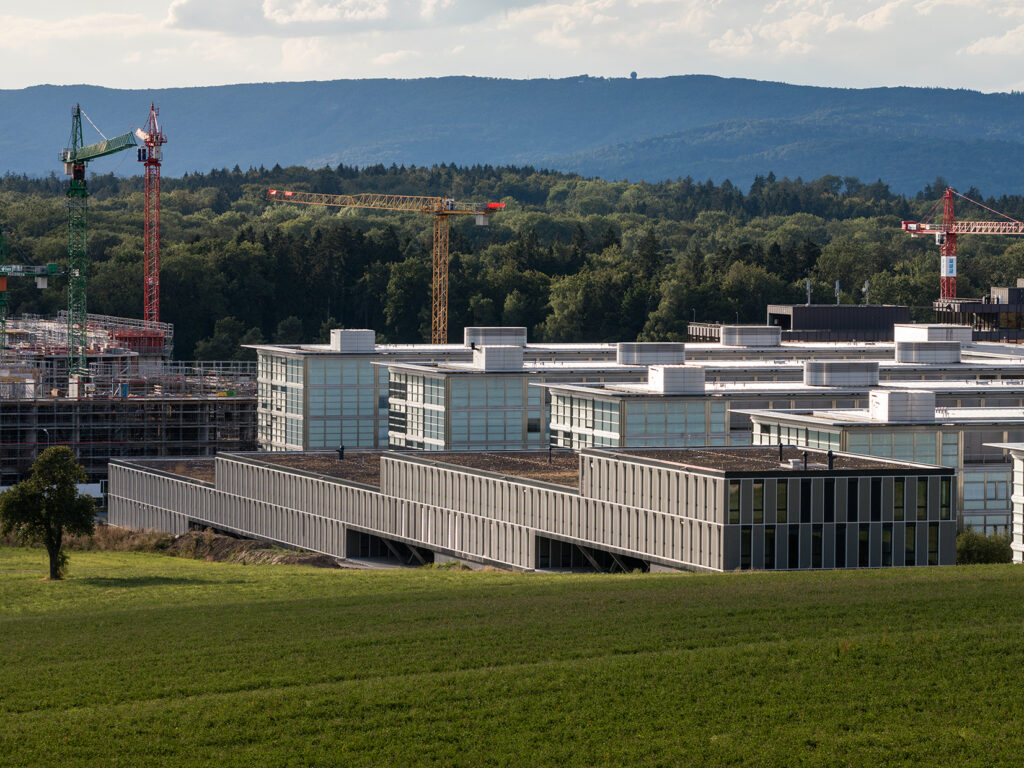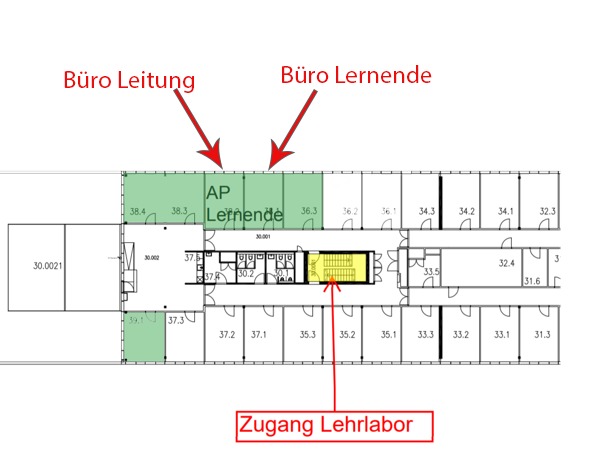IT Training Lab – «IT vocational training at ETH» – pimped up, Episode 1
ETH is an important pillar in IT education in Switzerland. Every year, about seven out of 170 trainees enter a career in modern technology. Training at ETH is highly regarded and its graduates are excellently educated. But to whom or what is ETH’s success due?
Apart from experienced teachers and a great deal of experience in the education of trainees, the IT Training Lab has for several years played a crucial role in maintaining the quality of vocational training.
Unfamiliar with the Training Lab?
The «IT Training Lab» is a training centre at the Hönggerberg campus designed to offer IT trainees a pleasant vocational setting and provide them with optimal support on their path into the working world. Trainees can learn the basics of IT for a year in premises specially designed for this and in particular IT at ETH under the supervision of Marc Winkler (ITS PPF) and Martin Schneider (ITS PPF).

The training lab has now been a part of the ETH training infrastructure for four years and has become one of its permanent features. the first class to be completely trained in the training lab will graduate this year. This is a perfect opportunity to return to the origins of the training lab and take a look at its development.
How an idea became an innovation
The idea of the training lab arose in 2014/2015 in HR, to be precise, with Dieter Schorno, who at the time was ETH’s vocational training director. It was then implemented together with the employees of the IT Services and the departments[2] . I spoke to Fabio Consani find out more about the origins. He is not only the mainstay of ITSM (IT Service Management[3]) , but also led the team that was intended to realise this idea.
Up to this time, IT trainees used to be assigned a mentor with whom they then spent their entire working and training time. Contact with other trainees was restricted here in most cases to a few interdepartmental occasions. There were no uniform or only minimally coordinated guidelines in the syllabus.
Fabio Consani had already been asked in 2002 if he would also be interested in training adolescents. He was offered a bigger office as an incentive. Thinking of this «incentive» today still occasionally prompts a wry grin on the part of Fabio, since this promise was never actually realised. But he still accepted the offer and subsequently always trained two trainees at intervals of two years. Consequently, he was not rewarded with a new office, but with the realisation: working with the young adults was fun! He then invested additional effort in what was actually his own syllabus in order to introduce more structure into the training. He also ensured that the trainees were able to network and get to know each other.
When duty calls
Although imparting knowledge to young people and tracking their progress was fun, vocational training moved to the back burner for Fabio when the new PPF division was set up and he had to focus his attention on its development and organisation to an increased extent. Thereafter, he no longer educated any new trainees, but his passion for education remained and continued to occupy him.
However, over the years, voices within the ETH’s IT vocational training could be heard with increasing frequency, expressing dissatisfaction with the entire training process. One problem, for example, was that ETH normally recruited IT trainees from the basic training year of the ZLI RAU. This was actually intended to make the work of the vocational trainers easier, since the trainees from the basic training year were one year older and had some experience. But this basic training increasingly failed to achieve what it was supposed to, since it was designed more for SMEs. But since ETH as a university requires a different, above all wider, basic education, the more time spent on such preparation no longer offered any major advantage.
Nothing ventured, nothing gained
Against this background, Dieter Schorno issued an invitation on 10 April 2015 to: «First meeting – IT training lab concept» A structured, carefully planned training centre to remedy the problems in basic training. This first meeting became a project for which he put together a team with interested parties both from IT Services as well as from the departments (see above).
A daring step, given that the project had not been approved «at the top». But a fortunate coincidence provided them with indirect support: in an interview in the Tagesanzeiger, the then ETH Council President Fritz Schiesser made a statement on financial cuts[4]. Among other things, he stated that cuts could being made everywhere, except in vocational training: «For us there are no taboos – except when it comes to the education of the 500 trainees. If we really want to have funds for investments, we won’t be able to avoid difficult decisions.»
A good framework for their proposal. And by coincidence, their timing was even better.
«In management, you can make plans for everything and do everything thing right. But there’s one thing you can’t control – time.»
After all the planning on how the training lab was to be set up and work, they naturally also still needed premises, which are not so easy to find at ETH. Many rooms were already oversubscribed and if anything became available, there was a long queue of interested parties. Despite all these factors, the «training lab team» was relatively late in contacting the property management, quite simply because they wanted to be able to present an order approved in advance by the executive board. It subsequently turned out that this was a wise decision, because otherwise they might not have got the premises. In addition, once they had an appointment with the portfolio managers of the properties, a new building opened on the Hönggerberg campus in which they were able to take over some offices directly. If they had come forward earlier, who knows if they would have been equally fortunate…


Now they had everything: a plan, rooms and a team to back it all up. Fabio Consani’s conclusion: this was an extremely motivating project from start to finish!
From here, Fabio once again withdrew to the side-lines and left the further implementation to others. The IT Training Lab got its first employees, its first trainees and much more. In the next post, we take a closer look at the next momentous step: how did the story continue?
Text by Kaja Walter and Francine Tobler, PR & Communication of IT Services
Links
- Official site of the IT Training Lab
- Also interesting: Creating the ITS logo
History of IT Services and ETH Zürich
- IT Services History I: The creation of the ITS logo
- IT Services History II: Through the ages of technology
- IT Services History III: The origins of ITSM
- Internet Access at ETH (ITS Blog)
[1] Fabio Consani, Peter Kessler of ITS PPF, Adrian Fischli ITS SD
[2] Andreas Burgener D-HEST, Thomas Berchtold D-BAUG
[3] See article on the development of ITSM: https://blogs.ethz.ch/its/2019/09/18/the-origins-of-itsm/
[4] Source: https://www.tagesanzeiger.ch/schweiz/standard/fuer-uns-gibt-es-keine-tabus/story/31143480).
erstellt am
in News



1 Kommentar für «IT Training Lab – «IT vocational training at ETH» – pimped up, Episode 1»